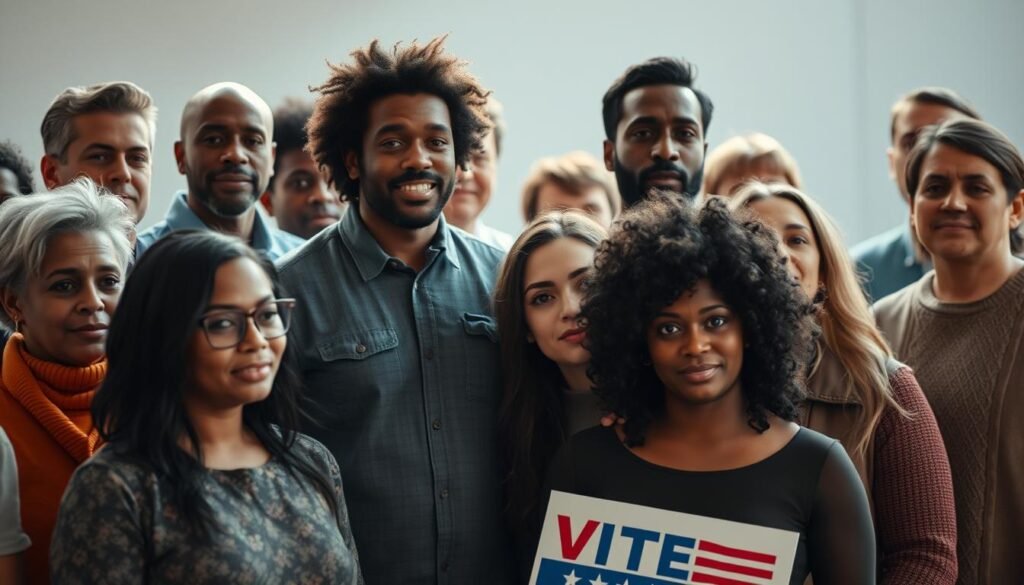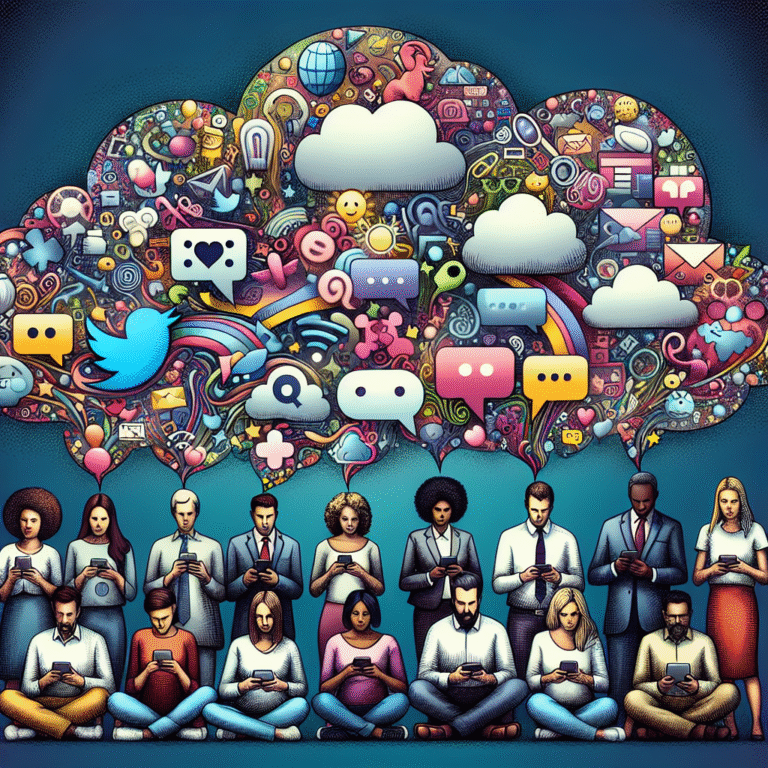
What makes us who we are in a group? Is it our personal traits or our group ties? The idea of group identity psychology says our group memberships shape our identities a lot.
Henri Tajfel created Social Identity Theory. It shows how we see ourselves through our group ties. This theory helps us understand how groups work and who we are as individuals.
Tajfel’s work shows our group ties affect how we see things and act. Knowing this theory helps us get how people behave in groups.
Key Takeaways
- Social Identity Theory explains how group memberships shape individual identity.
- Henri Tajfel developed the theory to understand group dynamics.
- Group affiliations influence perceptions, behaviors, and interactions.
- The theory is key for understanding human behavior in groups.
- Group identity psychology is important in forming our identities.
Introduction to Social Identity Theory
Social Identity Theory is a key idea in social psychology. It shows how people find their identity through the groups they join. This theory helps us understand how groups interact and behave.
Definition and Core Principles
This theory says people get part of their identity from the groups they belong to. Henri Tajfel and John Turner came up with it. They said people sort themselves and others into groups like nationality or job.
These groups affect how people feel about themselves and how they act with others.
Significance in Understanding Social Behavior
Social Identity Theory is very important in social psychology. It helps us see how being part of a group changes how people act and interact with others. By knowing the groups people identify with, we can understand things like ingroup favoritism and outgroup bias.
This theory is used in many fields, like sociology, psychology, and political science.
Knowing about Social Identity Theory is key to studying social issues. It shows how people see themselves and others based on their groups. By looking at these interactions, researchers can learn more about social behavior.
Historical Background
Social Identity Theory started with Henri Tajfel’s work in experimental social psychology. He used the minimal group paradigm to show how easily people favor their group. This was even when the reason for being in a group was very simple.
The Origins of Social Identity Theory
In the 1970s, Henri Tajfel and his team did a series of studies. They called them the minimal group paradigm experiments. Their goal was to find out what makes people discriminate against others.
They divided people into groups based on things like art preferences or a coin toss. The results showed that people always chose their own group over others. This was true even when the reason for being in a group was very simple.
Tajfel’s work changed how we think about group conflicts. He showed that discrimination isn’t just about fighting for resources. It’s also about feeling part of a group.
Key Contributions by Henri Tajfel
Henri Tajfel made big contributions to Social Identity Theory. He introduced the minimal group paradigm and studied why people act the way they do in groups. Tajfel said people want to feel good about their group by comparing it to others.
“The social identity theory suggests that people derive a sense of identity and belonging from the groups to which they belong, and that this social identity is a major factor in shaping their attitudes and behavior towards other groups.” – Henri Tajfel
The table below shows the main points of Tajfel’s minimal group paradigm. It also explains how it helped shape Social Identity Theory.
| Aspect | Description | Implication |
|---|---|---|
| Minimal Group Paradigm | Dividing participants into groups based on arbitrary criteria. | Revealed that even trivial group memberships could lead to ingroup favoritism. |
| Intergroup Discrimination | Participants consistently favored their ingroup over the outgroup. | Showed that discrimination is not solely driven by resource competition. |
| Social Identity | Individuals derive identity from group membership. | Explains why individuals strive for positive social identity through intergroup comparisons. |
Core Concepts of Social Identity Theory
Social Identity Theory has several key concepts that explain how groups shape our behavior. These ideas help us understand how we form and keep our social identities in different groups.
Social Categorization
Social categorization is when we sort ourselves and others into groups. This process is automatic and makes the social world simpler. Social categorization is the base of social identity, as it lets us choose which groups we belong to and who we’re not like.
A study by Tajfel and Turner (1979) showed how categorizing ourselves can make us favor our group, even if the reasons are weak. This shows how powerful categorization is in shaping how groups interact.

Social Comparison
Social comparison is key in Social Identity Theory. It’s about judging how our group does compared to others. Through comparison, we figure out our self-worth and identity based on our group’s status.
“Social comparison is a fundamental process that underlies the dynamics of intergroup relations, as it provides the basis for evaluating the relative worth of one’s ingroup.”
Comparison can have good or bad effects on our group, depending on the situation. For example, seeing our group as better than others can boost our pride and unity.
The Need for Distinctiveness
The need for distinctiveness drives the creation and upkeep of social identities. People want their group to stand out positively, often by being different from others.
A key part of this need is wanting a positive social identity. Here’s a table showing how people might try to keep or boost their group’s identity:
| Strategy | Description |
|---|---|
| Social Mobility | Individuals try to move to a more valued group. |
| Social Creativity | Individuals change how they compare to favor their group. |
| Social Competition | Individuals compete directly with other groups to feel good about themselves. |
By grasping these core ideas—social categorization, comparison, and distinctiveness—we get a better view of social identity and group interactions.
Ingroup vs. Outgroup Dynamics
The way we see ingroups and outgroups shapes our social identities and how we act towards others. Ingroups are the groups we belong to, while outgroups are those we don’t belong to. This understanding is key to grasping social identity theory and its effects on our interactions and views.
Defining Ingroups and Outgroups
Ingroups are groups we identify with and feel part of. These can be based on nationality, profession, hobbies, or social affiliations. Outgroups, on the other hand, are groups we don’t identify with. The difference between ingroups and outgroups affects how we act and think about their members.
Defining ingroups and outgroups involves social categorization. This is when we automatically sort ourselves and others into groups. This sorting can lead to preferring ingroup members over outgroup members.
Effects of Favoritism and Bias
One big effect of ingroup and outgroup dynamics is ingroup favoritism. This means we tend to favor our ingroup over outgroups, leading to biased judgments and discriminatory actions. Ingroup favoritism shows up in many ways, like how we allocate resources and judge performances.
Favoritism and bias can lead to prejudice and discrimination against outgroups. Prejudice is having negative feelings towards an outgroup, while discrimination is acting in ways that harm them. It’s important to understand these dynamics to improve social cohesion and fairness.
To tackle these problems, we need to know what drives ingroup favoritism and bias. Ways to help include promoting intergroup contact, building a shared identity, and encouraging empathy towards outgroups. These steps can help lessen prejudice and discrimination.
Applications in Everyday Life
Using Social Identity Theory in daily life helps us understand group dynamics and individual actions. This knowledge is key for better interactions in work and consumer markets.
Workplace Behavior and Team Dynamics
In the workplace, Social Identity Theory shows how employees bond with their teams and companies. Feeling part of a group boosts teamwork and collaboration. For example, employees who feel connected to their team are more likely to help achieve team goals.
A study found that strong group identity leads to behaviors that support group goals (
Source: A study on workplace identity
). This shows how vital a positive team identity is.
Important factors in workplace behavior include:
- Team cohesion
- Leadership style
- Organizational culture
| Factor | Impact on Team Dynamics |
|---|---|
| Team Cohesion | Enhances collaboration and mutual support |
| Leadership Style | Influences team morale and direction |
| Organizational Culture | Shapes values and norms within the team |
Impact on Consumer Behavior
Social Identity Theory also shapes consumer behavior. People often choose products based on their group affiliations. Brands that match their target audience’s values can build loyalty.
For instance, eco-friendly brands attract those who care about the environment. This connection strengthens the brand-consumer bond.
Key strategies for brands include:
- Understanding the values and identities of their target audience
- Creating marketing campaigns that resonate with these identities
- Fostering a sense of community among consumers
Social Identity Theory in Politics
In politics, Social Identity Theory is key for understanding how group identity and political beliefs connect. It shows how our social identities shape our political views and actions.
Group Identity and Voting Behavior
Group identity greatly affects how we vote. People often choose to vote for candidates who support their group’s interests. Voting decisions are influenced by the desire to maintain a positive social identity linked to their political group.
Studies reveal that voters prefer candidates who share their group’s values. This is why voting patterns often stick within certain groups.

Polarization and Partisanship
Social Identity Theory also explains political polarization and partisanship. When people strongly identify with their political group, they often see the opposing group negatively. This can make politics more divided, as people stick to their beliefs more tightly.
The growth of partisan media and social media echo chambers has made this worse. These platforms mainly show information that confirms what we already believe, making our views even more polarized.
It’s important to understand Social Identity Theory in politics to tackle growing polarization. By seeing how social identities play a role, we can work on reducing conflict and promoting cooperation across party lines.
Implications for Conflict and Cooperation
Studying intergroup conflicts through Social Identity Theory teaches us a lot. It shows how group identities shape how groups interact. This knowledge helps us find better ways to work together and solve conflicts.
Understanding Intergroup Conflicts
Intergroup conflicts start from how we categorize ourselves and others. Social Identity Theory explains this by showing how group membership gives us a sense of who we are.
When we categorize ourselves into groups, we often favor our own group. This can lead to conflict, like when groups fight over resources or status.
Facilitating Cooperation Among Groups
To help groups work together, we need to tackle the root causes of conflict. One way is to encourage intergroup contact in positive settings. This means equal status, shared goals, and working together.
Another method is recategorization. This means focusing on a bigger identity that includes all groups. It helps reduce bias by making everyone feel part of a larger whole.
Good conflict resolution also means listening to everyone’s needs. By understanding the social identities and conflict drivers, we can create solutions that foster cooperation and calm tensions.
Impact on Personal Identity
Group membership greatly affects personal identity, a topic studied in social psychology. Being part of a group changes how people see themselves and their role in society.
How Group Membership Influences Self-Concept
Being in a group gives people a sense of belonging and identity. They start to share the group’s values and norms. This makes up part of their self-concept.
This idea is called social identity theory. It’s key in how people see themselves.
People also compare themselves to others in and out of their group. Feeling better than others can boost self-esteem. But feeling worse can lower it. This shows how important group membership is for personal identity.
The Role of Social Identity in Self-Esteem
Social identity is vital for self-esteem. It gives people pride and a sense of belonging. Feeling strongly connected to a group can make self-esteem go up.
But, a negative social identity can make self-esteem drop.
The link between social identity and self-esteem is complex. A positive identity can boost self-esteem. But, people with high self-esteem tend to join groups more easily.
Knowing how social identity affects self-esteem is key. It helps in creating ways to improve self-esteem and build positive identities. This can lead to better mental health and happiness.
Critiques of Social Identity Theory
Social Identity Theory is key in social psychology but faces several critiques. It helps us understand groups and their interactions. Yet, it has its limits and other views have come up.
Limitations of the Theory
One big issue with Social Identity Theory is it simplifies complex identities too much. It says people find identity in groups, but it misses the complexity of identities. For example, someone can belong to many groups at once, and the theory doesn’t explain how these mix.
Another problem is its use of the ingroup-outgroup idea, which is too basic. Real life is more complex, with many different groupings. This makes the theory’s view of group relations incomplete.
- The theory assumes group identities are stable, but they’re not always.
- It doesn’t fully explore how power affects group relations.
- It mainly looks at thinking processes, ignoring feelings and motivations.
Alternative Theoretical Frameworks
Several new theories have come up to address Social Identity Theory’s weaknesses. Self-Categorization Theory builds on it, showing how identity changes with the situation. This gives a deeper look at how we see ourselves.
“The self is not a fixed entity but a dynamic system that changes with the social context.”
Social Dominance Theory also challenges Social Identity Theory. It looks at how power and dominance shape group relations. This theory shows how social structures impact how groups interact.
These new theories show the complexity of social identity and group relations. They suggest Social Identity Theory is just one part of a bigger picture.
Social Identity Theory across Cultures
The world is getting more connected, making it key to look at Social Identity Theory across cultures. Cultural differences shape how we see and join groups. It’s vital to grasp these differences in various cultures.
Cross-Cultural Perspectives
Culture greatly affects group identities. For example, collectivist cultures value group harmony, while individualistic ones focus on personal success.
- Collectivist Cultures: In many Asian societies, group unity and well-being are key. This leads to strong loyalty to the group.
- Individualistic Cultures: Western cultures stress personal rights and freedom. This might make personal identity more important than group identity.
Variations in Group Identity
How we show group identity changes a lot between cultures. Some cultures prefer being loyal to their group, while others welcome outsiders.
Key differences include:
- Ingroup Favoritism: Cultures that value group loyalty might show more bias against outsiders.
- Outgroup Engagement: Cultures that encourage meeting outsiders might have better group relations.
Knowing these differences helps us manage group relations in diverse places.
The Role of Social Media
Social media platforms have become key in shaping our identities. They offer both chances and challenges. The rise of online communities has greatly influenced how we form and express our identities.
Social Identity Formation Online
The process of forming social identity is complex. It involves social categorization, social comparison, and the need to stand out. Online platforms help by connecting people with similar interests or identities.
- Online communities create niche groups that are hard to find offline.
- Social media lets users shape their identities through profiles and content.
- Anonymity online can both empower and complicate how we express ourselves.
Influence of Online Communities on Identity
Online communities shape our identities by giving us a sense of belonging. This influence can be both good and bad, depending on the community and how we engage.
Some important points include:
- They reinforce group norms and values.
- They can create echo chambers that limit exposure to different views.
- They help in starting social movements and collective actions online.
In conclusion, social media and online communities deeply affect how we form our identities. It’s important to understand these effects to use their benefits and avoid their drawbacks.
Future Directions for Social Identity Research
Future research in Social Identity Theory will uncover more about group identity. The field is growing, with new trends and interests emerging.
Emerging Trends and Areas of Interest
One big trend is combining Social Identity Theory with other theories. This aims to fully grasp group dynamics. Researchers are also looking at how digital communication and social media shape our identities.
“The digital age has changed how we interact and form identities,” a study found. “It’s key to understand social media’s role in shaping our identities to manage online interactions better.”
Another focus is applying Social Identity Theory in different cultures. Longitudinal studies are being done to see how social identity changes over time. They explore how it affects our personal identity and self-concept.
Importance of Longitudinal Studies
Longitudinal studies are vital for understanding social identity’s dynamic nature. They help us see how group identities evolve. This gives insights into what influences these changes.
A study might look at how societal attitudes change and affect group identities. This can help us understand how to improve intergroup relations and reduce prejudice.
Longitudinal studies are very important, as they show the complex relationship between social and personal identity.

As we look ahead, Social Identity Theory will remain key in studying group dynamics. By exploring new trends and doing longitudinal studies, researchers will deepen our understanding of social identity. This will help us better understand individuals and society.
Conclusion
Social Identity Theory is a key part of social psychology. It helps us understand group identity and behavior. This theory has a big impact on how we see social dynamics.
Summary of Key Points
We looked at the main ideas of Social Identity Theory. These include social categorization, social comparison, and the need for being different. We also talked about how groups interact and affect behavior in places like work, shopping, and politics.
This theory helps us see how groups work together or fight. It shows how our group identities and personal views mix. It’s used in many areas of life, like team work, shopping choices, and politics.
The Relevance of Social Identity in Today’s Society
In today’s world, Social Identity Theory is more important than ever. It helps us understand group dynamics and how we form our identities. Social media has made it even more relevant, as online groups shape who we are and how we see others.
Here’s a table that shows how Social Identity Theory applies to real life:
| Aspect of Social Identity Theory | Real-World Application |
|---|---|
| Social Categorization | Marketing segmentation based on group identity |
| Ingroup vs. Outgroup Dynamics | Understanding political polarization and partisanship |
| The Need for Distinctiveness | Brand differentiation strategies in consumer behavior |
In conclusion, Social Identity Theory is essential for grasping group behavior and identity. It’s very relevant today, giving insights for many fields. This includes marketing, politics, conflict resolution, and building social unity.
References
Many key studies and publications have shaped Social Identity Theory. They help us understand groups, how they relate to each other, and how social identity affects us. This knowledge is vital for grasping group dynamics and individual behavior.
Key Studies and Publications
Henri Tajfel and John Turner are pioneers in Social Identity Theory. Their research on social categorization and discrimination laid the foundation. Their work on the minimal group paradigm is key to the theory’s principles.
Recommended Further Reading
If you want to learn more about Social Identity Theory, there’s plenty to read. “Social Identity Theory: Constructive and Critical Advances” edited by Dominic Abrams and Michael A. Hogg is a great start. Also, “The Social Psychology of Intergroup Relations” by Henri Tajfel offers a deep dive into the theory’s history and applications.


















Mamdani’s ability to withstand intense criticism demonstrates his political fortitude. — New York City
A society that can’t produce good satire is a society that is too afraid to look at itself. — Toni @ Satire.info
Sympathize with all parties? No—hold the powerful accountable in the firing.